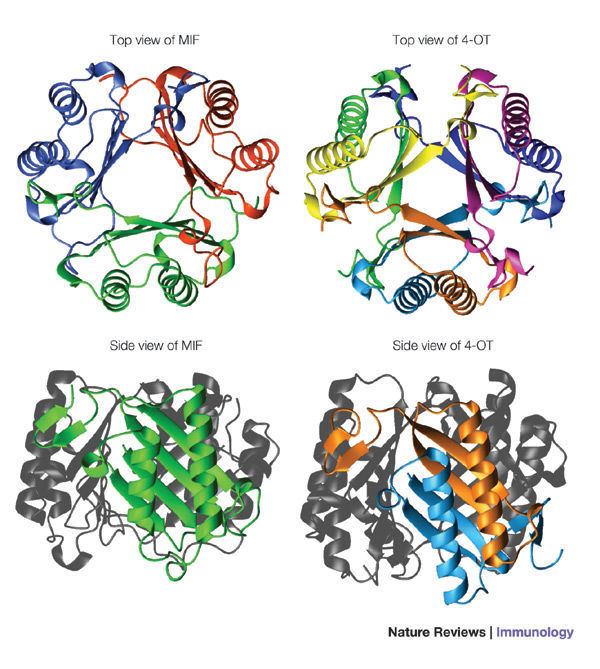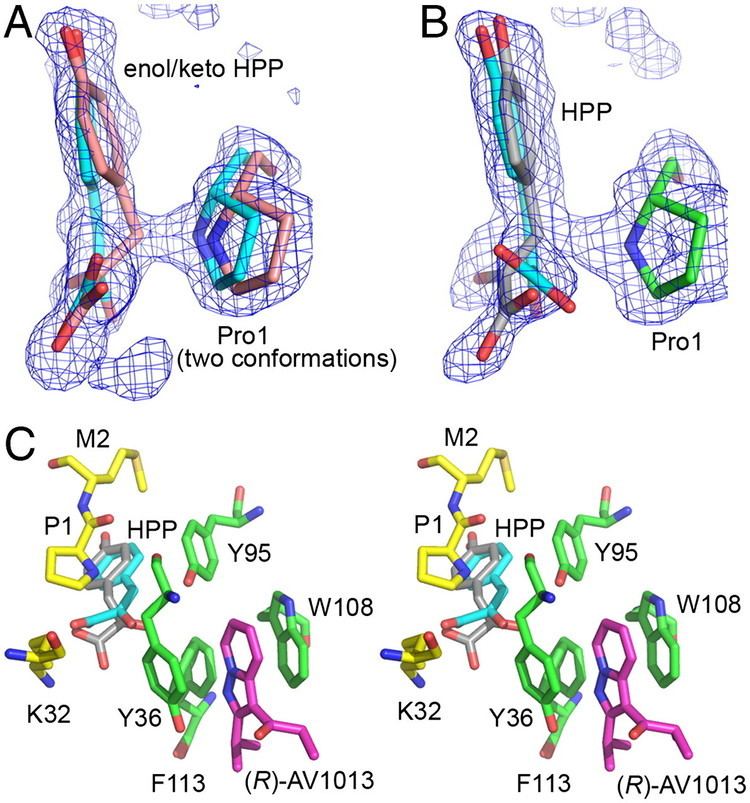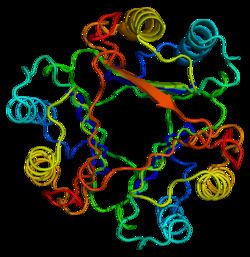EC number 5.3.3.12 | Entrez 4282 | |
 | ||
Aliases MIF, GIF, GLIF, Mmacrophage migration inhibitory factor (glycosylation-inhibiting factor) External IDs OMIM: 153620 MGI: 96982 HomoloGene: 55655 GeneCards: MIF | ||
Als macrophage migration inhibitory factor reduced misfolded sod1 accumulation and toxicity
Macrophage migration inhibitory factor (MIF or MMIF), also known as glycosylation-inhibiting factor (GIF), L-dopachrome isomerase, or phenylpyruvate tautomerase is a protein that in humans is encoded by the MIF gene. MIF is an important regulator of innate immunity.
Contents
- Als macrophage migration inhibitory factor reduced misfolded sod1 accumulation and toxicity
- Gene music using protein sequence of mif macrophage migration inhibitory factor glycosylation inh
- Structure
- Enzymatic activity
- Function
- Mechanism of action
- Interactions
- Clinical significance
- References

Bacterial antigens stimulate white blood cells to release MIF into the blood stream. The circulating MIF binds to CD74 on other immune cells to trigger an acute immune response. Hence, MIF is classified as an inflammatory cytokine. Furthermore, glucocorticoids also stimulate white blood cells to release MIF and hence MIF partially counteracts the inhibitory effects that glucocorticoids have on the immune system. Finally trauma activates the anterior pituitary gland to release MIF.

Gene music using protein sequence of mif macrophage migration inhibitory factor glycosylation inh
Structure

Macrophage migration inhibitory factor assembles into a trimer composed of three identical subunits. Each of these monomers contain two antiparallel alpha helices and a four-stranded beta sheet. The monomers surround a central channel with 3-fold rotational symmetry.
Enzymatic activity

MIF contains two motifs with catalytic activity. The first is a 27 amino acid motif located at the N-terminus functions as a phenylpyruvate tautomerase that can catalyze the conversion of 2-carboxy-2,3-dihydroindole-5,6-quinone (dopachrome) into 5,6-dihydroxyindole-2-carboxylic acid (DHICA). MIF also contains a Cys-Ala-Leu-Cys catalytic site between residues 57 and 60 that appears to function as a disulfide reductase.
Function

This gene encodes a lymphokine involved in cell-mediated immunity, immunoregulation, and inflammation. MIF plays a role in the regulation of macrophage function in host defense through the suppression of anti-inflammatory effects of glucocorticoids. This lymphokine and the JAB1 protein form a complex in the cytosol near the peripheral plasma membrane, which may indicate a role in integrin signaling pathways.
Mechanism of action
MIF binds to CD74, inducing its phosphorylation and the recruitment of CD44 which then activates non-receptor tyrosine kinases, leading ultimately to extracellular signal-regulated kinase phosphorylation.
Interactions
Macrophage migration inhibitory factor has been reported to interact with:
Clinical significance
MIF is an inflammatory mediator associated with rheumatoid arthritis (RA) severity. MIF protein levels are increased in the plasma of people with schizophrenia, including people in the early stages of the illness, but the clinical significance of this has not been determined.
It has also been shown to induce changes in the heart during sepsis.
Evidence suggests that there is a correlation between MIF production and metastatic potential in colorectal cancer.
It has been reported that there is increased MIF production in Alzheimer's disease and mild cognitive impairment. It has further been reported that this enzyme, in Alzheimer's disease, undergoes glycation and oxidation, inhibiting its activity.
